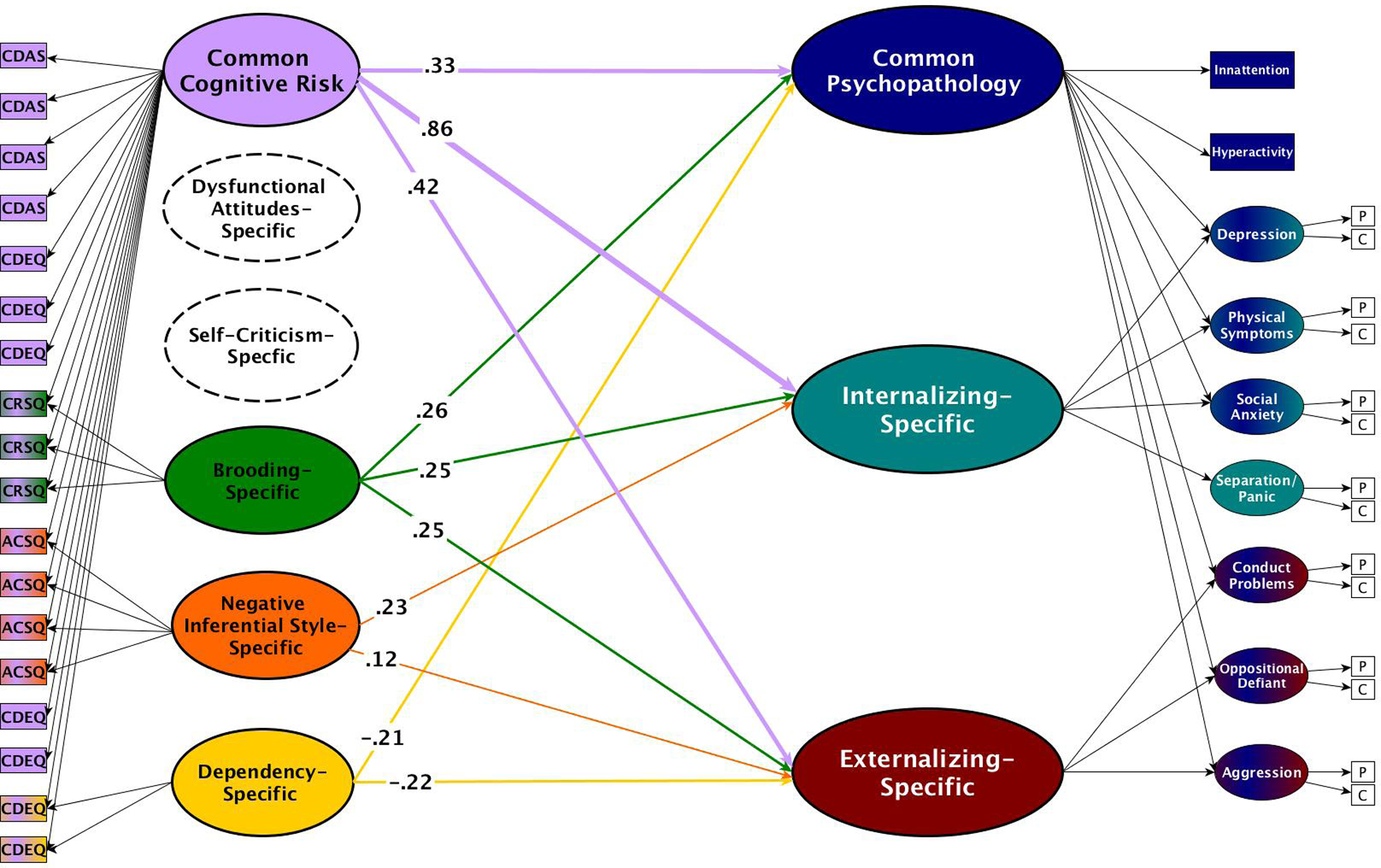Figure 1.

Model depicting associations between bifactor models of cognitive risk and psychopathology controlling for gender. Numbers on lines are standardized regression coefficients (all p’s < .05). The thickness of lines reflects the magnitude of regression coefficients. The specific dysfunctional attitudes and self-criticism factors have a dashed outline because they were both subsumed by the common cognitive risk factor. Cognitive risk measures: ACSQ=Adolescent Cognitive Style Questionnaire; CDAS=Children’s Dysfunctional Attitudes Scale; CDEQ=Children’s Depressive Experiences Questionnaire; CRSQ=Child Response Styles Questionnaire-Brooding items. Psychopathology measures: inattention and hyperactivity were measured via parent report with the National Institute of Mental Health Collaborative MTA version of SNAP-IV; depression was measured with the Children’s Depression Inventory (CDI); anxiety was measured with the physical symptoms of anxiety, social anxiety, and separation/panic subscales of the Manifest Anxiety Scale for Children (MASC); oppositional defiant disorder (ODD) and conduct disorder (CD) were assessed with the DSM-oriented scales of the Child Behavior Checklist (CBCL) and Youth Self Report (YSR); aggression was measured with the aggression scale of the Early Adolescent Temperament Questionnaire Revised (EATQ-R). P=parent report. C=child report. Though not depicted here to improve readability, the bifactor model of psychopathology included reporter method factors and random intercept factors for both parent and child report (for more details, see Snyder et al., 2017a).
